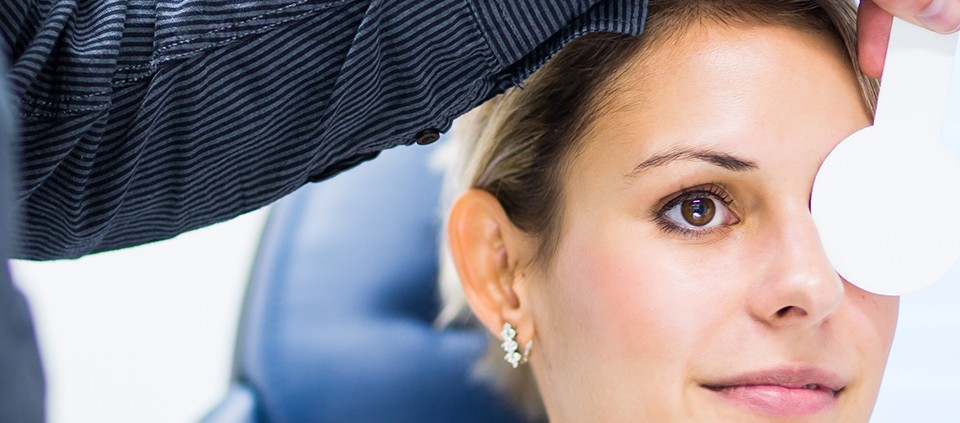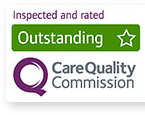How may I help?
Cataract Surgery
Mr Hu offers cataract surgery to restore vision. For most patients, the treatment of choice is a minimally-invasive procedure, called phacoemulsification.
The surgery lasts about 30 minutes and can usually be performed as a day case, under local anaesthesia. This means patients recover very quickly from surgery and don’t need to stay overnight in hospital. Cataract surgery has a very high success rate, and the risk of a complication is low.
Quick Facts
- Blurring of your vision, glare, and difficulty reading which develop over months or years are symptoms that warn that you may be developing cataracts.
- Cataracts commonly affect us and become more noticeable as we get older.
- Cataracts can be diagnosed by your optician or doctor by examining the eyes with specialized viewing instruments.
- Cataract surgery is not necessary if your cataracts do not affect your daily activities such as driving, reading, watching TV or sporting pursuits, or if you are not keen to have surgery.
- Cataracts are treated by the removal of the cataract by a specialist eye surgeon with implantation of an artificial lens.
- A variety of intraocular lens types can be implanted to restore vision in different ways.
- In the best hands, cataract surgery is a safe and effective way to restore vision and serious complications are unusual.

It is uncertain precisely why cataracts occur. Most cataracts are thought to be caused by changes in the protein structures within the lens over a period of years so that the lens become cloudy. Rarely, early childhood cataracts or cataracts in the new-born may be a result of genetic disease, hereditary enzyme defects, or systemic congenital infections. Formation of cataracts can also be hastened by severe trauma to the eye, eye surgery, or intraocular inflammation. Excessive ultraviolet light exposure, exposure to ionizing radiation, smoking, diabetes mellitus, or the use of certain medications, such as oral, topical, or inhaled steroids, & statins have been thought to be associated with promoting cataract formation.
Eye pain, redness or tiredness is usually not associated with cataract. As cataracts usually develop gradually over months or years, any more rapid or painful changes in vision suggest other eye diseases. If in doubt, there should be an urgent or early evaluation by an ophthalmologist.
When you develop significant vision loss directly because of the presence of cataract, then cataract surgery is normally recommended. However, your ophthalmologist may not recommend surgery if you also have other significant eye disease, unconnected to cataracts, that impairs your vision. If it is necessary to perform cataract surgery to remove a cataract that resulted from eye trauma or previous eye surgery, so that the eye specialist is able to see the retina at the back of the eye, this may be appropriate in order that the ophthalmologist can assess the retina or optic nerve for further treatment. Cataract surgery is usually performed under local anaesthesia and typically takes less than 30 minutes, but account is taken of the individual’s coexisting medical conditions and the mode of cataract surgery is personalized for the individual.
If your cataract does not affect your daily life in any way, or if you are not keen to have surgery, it is not imperative to undergo cataract surgery. Most cataracts develop slowly with age, and many patients do not notice loss of vision until it is quite advanced. It is not possible to predict with certainty how rapidly cataracts will develop and some cataracts remain less dense and do not progress to the degree where they cause blurred vision severe enough to require cataract surgery. Some cataracts progress more rapidly. Your ophthalmologist will assist you in making your own individualized choice about whether and when to proceed with cataract surgery. The ophthalmologist will be able to advise you how much of your loss of vision is due to cataracts and what sort of visual improvement you can expect if you choose to have cataract surgery.
Other less common techniques for cataract surgery nowadays are Extra-capsular cataract surgery and Intra-capsular cataract surgery, but may be appropriate in such cases as extremely advanced and dense cataracts, or where there has been previous significant eye trauma.
The following is a summary of the available types of artificial lenses:
1. Mono-focal lens are the most commonly implanted lenses nowadays. They can provide very good distance vision, supplemented often with a light pair of glasses. Mono-focal lenses provide sharpest focus at only one distance and they do not correct pre-existing astigmatism, which is due to irregular corneal shape that tends to distort vision at all distances. Reading glasses are often needed by patients who have had mono-focal intraocular lenses implanted. With mono-focal lenses, it is possible to choose to aim for good close vision instead, as this is particularly suitable for those who wish to do a lot of detailed close work or prefer to be able to read without glasses. Glasses for distance will then be required. A final option, using mono-focal lenses, is so-called “Monovision”, which aims to provide a combination of distance vision in one eye and near vision in the other. The purpose is to minimize the need for glasses, but Monovision may result in some visual difficulties which may be difficult to get used to. Monovision is not always ideal and should be chosen only after very careful consideration.
2. Toric lens are suitable for correcting astigmatism as well as short-sightedness. Due to the difference in lens power in different areas, the correction of astigmatism with a toric lens requires that the lens be positioned in a very specific configuration. There is a risk that if the toric lens rotates, a second operation may be needed to rotate it back into position for best vision, or sometimes to remove it and replace with a standard lens. With toric lenses, patients are still likely to need corrective glasses for all near tasks, such as reading or writing.
3. Multifocal lens, one of the latest advances in lens technology, may allow some individuals to see at a variety of distances, including near, intermediate & distance. However, multifocal lenses are not suitable for everyone as they cannot correct astigmatism, and patients may still require spectacles or contact lenses for clearest vision.
Prior to surgery, it would help to discuss your refractive requirements with your ophthalmologist because this will also affect the selection of the most suitable artificial lens to be implanted for you. To make this selection, special tests are done usually prior to the operation day but they may also be done when you first attended the clinic or a few weeks prior to surgery. In preparation for these special test measurements, contact lens wearers must leave their contact lenses out for 1-2 weeks, if using soft contact lenses, or 2-4 weeks, if using gas permeable or hard contact lenses.
Follow all of your preoperative instructions, including not eating or drinking anything after midnight the day prior to your surgery. Arrange for family or friends to transport you home after the surgery is complete as cataract surgery does not usually require an overnight stay in hospital. You will normally be required to report several hours before the scheduled time for your surgery. An anaesthetist may work with the ophthalmologist to determine the type of sedation, where necessary. Most cataract surgery is done under local anaesthesia or with only minimal sedation without being put to sleep. To reduce sensation of the eye during cataract surgery, numbing drops or an injection around the eye may be used.
Cataract surgery will normally take approximately 20-30 minutes. It is performed while you are lying down on your back and your face partially covered by a sterile sheet. The surgeon uses a microscope with a bright light, and although you do not see the operation or the instruments used, you may be aware of a bright light, see moving shapes, and often interesting coloured lights and shadows. During the surgery, you may also notice the sensation of pressure from the various instruments used.
After leaving the operating room, you will be prescribed several eye-drops to be used for a few weeks postoperatively. Although you may notice some discomfort, most patients do not experience significant pain following surgery. You should contact your ophthalmologist or local eye casualty department urgently if you experience distorted vision, increasing blurring or decreasing vision, increasing eye redness, soreness or significant pain, an enlarging shadow in your field of vision, especially with increasing floaters or flashing lights, or a yellow / green eye discharge following cataract surgery.
After surgery, the doctor or nurse will ensure you are given the postoperative instructions, the eye drops, and check that you are ready to be discharged from hospital, and this all takes about 30-60 minutes.
Avoid strenuous activity for 2 weeks & avoid heavy lifting for 4 weeks, to allow time for the self-sealing incisions, made during cataract surgery, to heal.
Use the eye drops prescribed to you as instructed – you will be shown how to clean your eye and put in the eye drops correctly. In summary, it involves tilting your head back, pulling your lower eyelid down gently, looking upwards and then, without letting the tip of the bottle touch your eye, placing the drops inside the lower lid. Avoid rubbing or touching the eye in the first 2 weeks after the surgery. Dark glasses may be worn if you find that you are sensitive to light.
You will be advised when you should return for re-assessment during the period after cataract surgery. During this period, you will be using several eye-drops which help protect against infection and inflammation. Within a few days, most people notice that their vision is better and good enough to return to work. During follow-up visits, your ophthalmologist will check for complications. Appropriate glasses may be prescribed, if needed, for optimal vision, usually about 4-6 weeks after the surgery.
Although the pre-operative measurements usually enable the surgeon to select a lens implant which provides the desired near or distance vision, the variability of individual responses means that it is not possible to guarantee absolute accuracy, so that there may sometimes be an unexpected need for strong glasses. There is commonly a change in colour vision such that colours look brighter or bluer. Also, rare complication can occur, including one person in every 1000 going blind in that eye as a direct result of the operation, and one in 10000 losing the operated eye. There is a 1:100 risk of needing additional surgery to rectify a problem, such as the loss of all or a part of the cataract into the back of the eye. Before you sign the consent form for the surgery, your ophthalmologist will discuss the potential complications of the procedures that are unique to your eye.
The complications that can arise after cataract surgery are persistent inflammation, infection, changes in eye pressure, or swelling or detachment of the retina at the back of the eye. In rare instances, the delicate bag the lens sits in is injured (posterior capsular rupture), so that the artificial lens may need to be placed in a different location, or the artificial lens moves or malfunctions and may need to be repositioned, exchanged, or removed. All these are some of the large number of possible complications of cataract surgery but the list is not comprehensive. Many are very rare complications but even so can lead to a poor visual outcome and so close follow-up is required after cataract surgery.
The thin lens capsule may in some cases become cloudy some months or years after cataract surgery, causing a return of blurred vision. This process is called posterior capsular opacification. 1 in 10 patients require treatment with a laser procedure known as YAG laser capsulotomy, taking only minutes during an outpatient visit, to painlessly create a hole in the cloudy lens capsule and vision usually improves rapidly.
Focussed on Excellence
Mr Kuang Hu, MA MB BChir PhD FRCOphth, completed his medical degree and research doctorate at the University of Cambridge before training in Ophthalmology on the London Registrar rotation. He is a Consultant Ophthalmic Surgeon at Moorfields Eye Hospital NHS Foundation Trust.
Specialist Expertise
Mr Hu's expertise encompasses cataract surgery and the management of glaucoma. He provides medical, laser and surgical glaucoma treatments, including trabeculectomy and aqueous shunts. He also handles all aspects of General Ophthalmology.
Quality Care
Your eyesight matters and often cutting cost means reducing quality. It's worth investing in personalised treatment plans, state-of-the-art technology, and carefully tailored care delivered by a highly-qualified consultant.
Personal Service
All consultations are personally carried out by Mr Hu to ensure you have individually-tailored care throughout your journey.
Latest Technology
Mr Hu uses state-of-the-art ophthalmic instruments & machines. No expense has been spared providing the best technology available for your eyecare.



